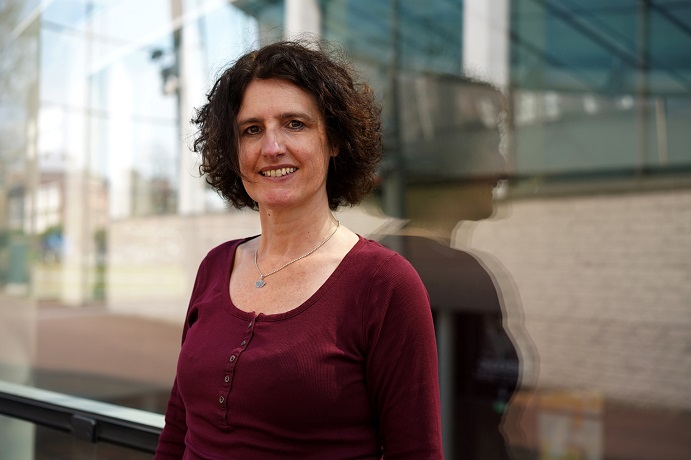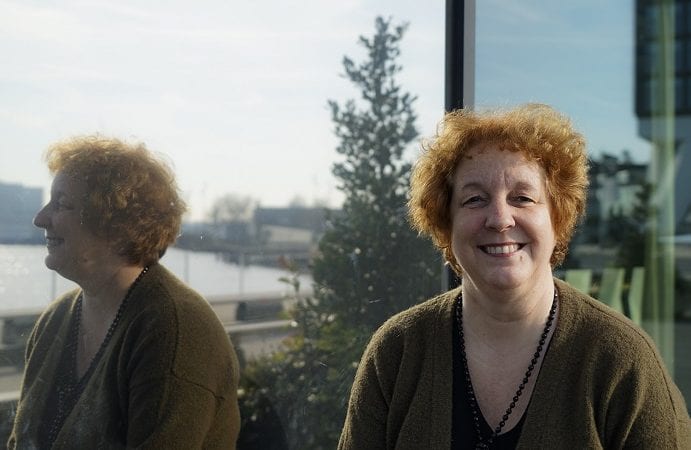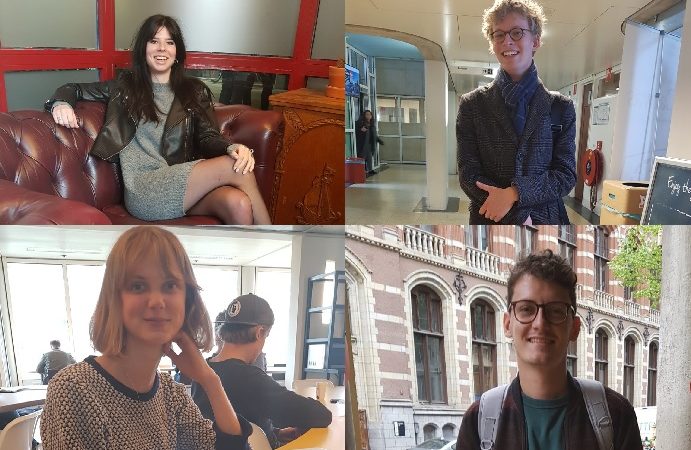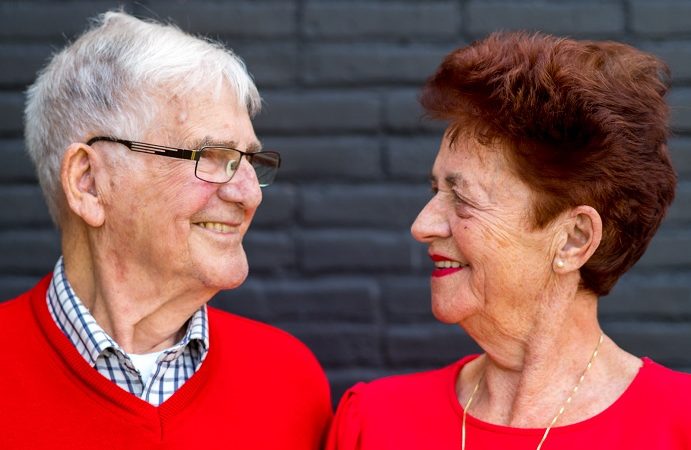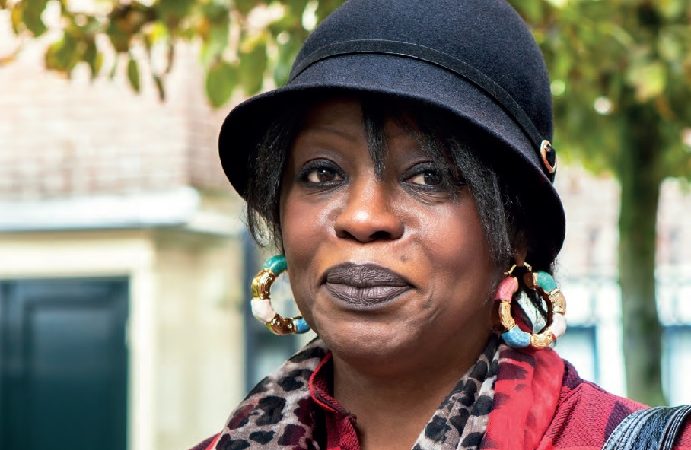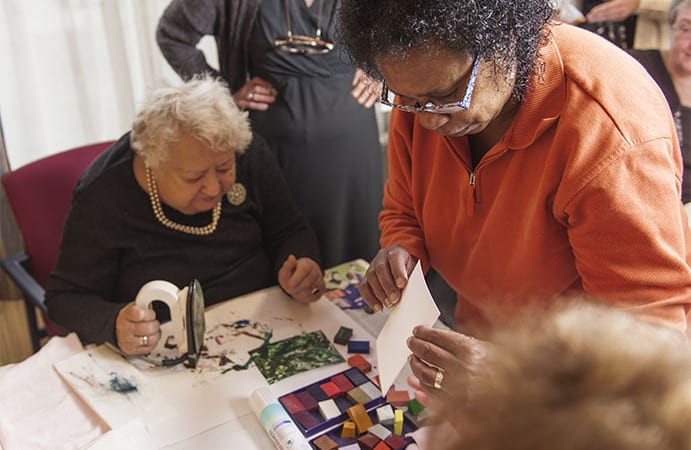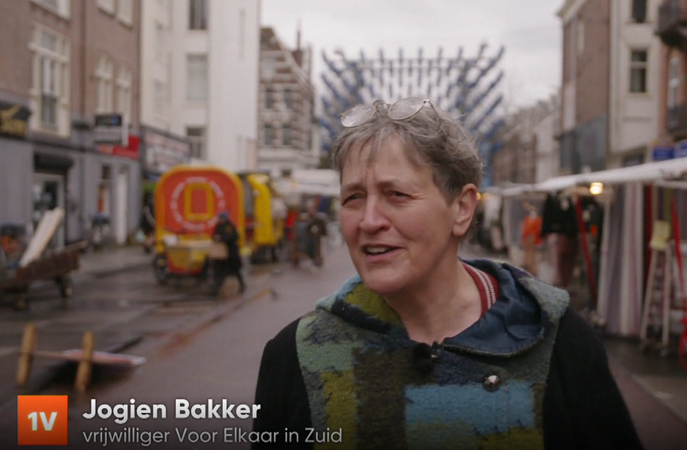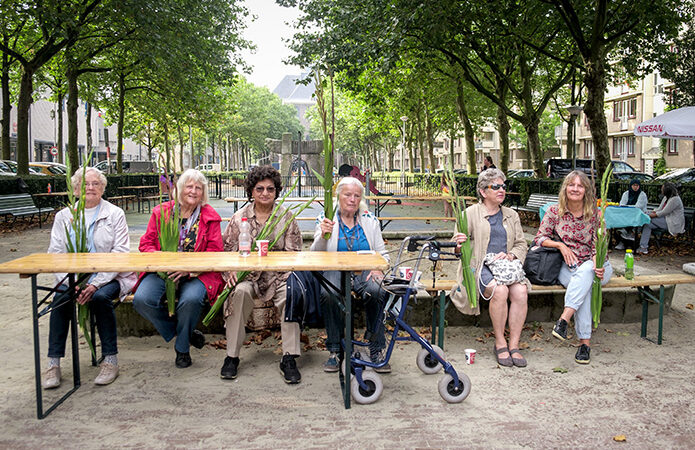Ellen helps seniors to get more exercise and companionship by matching them with a sweet dog sitter in the neighborhood.
Volunteer work in Amsterdam overloaded!

Well-functioning volunteer organizations are the social capital of the city. Volunteer organizations keep Amsterdam, its residents, and the volunteers healthy and resilient. That is the starting point, but is it still true?
Volunteers keep cultural places accessible, they provide practical help to the sick, they give attention to the lonely, they give language lessons to newcomers, sports lessons to children, and make the neighborhood greener. Volunteer Center Amsterdam sees that there is an increasing demand on this willingness of Amsterdammers to selflessly contribute. And we are concerned about this and believe that volunteer work is becoming overloaded.
Expectations up, subsidies down
The expectations for the use of volunteers are too high. Is there a cutback on supplementary public transport? Can home care no longer do groceries? Is there no more money for ambulatory home guidance for children? Volunteers are seen as the solution.
Also, due to the waiting lists for household help, home care, long-term care, foster care, and day care, more and more requests for help from residents of Amsterdam are being passed on to volunteer organizations, where they don’t actually belong. This concerns complex or acute requests for help that require professional knowledge and skills. And even when the request is appropriate, we increasingly see that residents of Amsterdam have multiple requests for help in different areas of life, such as language assistance, companionship, sports, finances. Informal care organizations generally provide assistance in one area, which means that multiple volunteers need to be deployed for one Amsterdam resident. This requires additional coordination with customer managers or care professionals.
The subsidies for volunteer organizations that have to recruit, train, and guide all those volunteers, coordinate with external parties, are under pressure every year. Or their projects are being cut. They are being asked to do more and more without an increase in subsidies.
Shortages
The neighborhood teams are tasked with deploying as many volunteers as possible to assist residents with their requests for help. In most districts, the neighborhood teams are starting to better connect with volunteer organizations. This is making it increasingly clear where the shortages lie. This varies per district, but what we often hear is: there are too few volunteers for hospital accompaniment, transporting children, and providing long-term grocery assistance. There is also insufficient support for elderly people with dementia and individuals with acquired brain injuries who live at home. To the extent that these requests for help can be taken on by volunteers, there must also be an organization that facilitates this.
Participation
For people in vulnerable situations, there is an increasing demand for volunteer work: individuals who have not had a paid job for a long time, people with mental health issues, individuals with health problems. Those who used to attend day care activities are now required to do volunteer work. This means that many organizations, from the petting zoo to the community center, are receiving volunteers who need extra guidance. The additional help is appreciated, but can the coordinators provide the necessary support?
A client needs help changing clothes for rehabilitation swimming. This task is not really suitable for a volunteer, but professional care does not provide this service either and refers to informal care. Ultimately, the buddy is willing to do it for the social interaction, but it is actually too demanding for her.
Overdraft
We are hearing more and more that volunteers are quitting their volunteer work because of the heaviness of the job. They are dealing with very complex issues of clients whom they guide one-on-one, and have no one to consult with. Think of people with severe psychiatric problems, people with multiple simultaneous issues such as addiction, debts, and homelessness. Volunteers feel responsible and often feel inadequate. If they are willing to continue, they need more training and guidance. Volunteer coordinators are doing their best to protect their volunteers, but are faced with a dilemma: not overburden the volunteer or offer help to the people of Amsterdam?
Volunteer coordinators in a bind
This puts volunteer coordinators in a difficult position. More and more is being asked of them:
- They have almost continuously too few volunteers and are therefore constantly recruiting.
- They often deal with people who quickly quit volunteering, causing them to lose time recruiting and training again.
- They are also asking if you would be willing to support a few volunteers with intellectual disabilities, someone recovering from burnout, or someone who is not yet fluent in the language.
We are seeing more and more that coordinators have to guide large numbers of volunteers and therefore cannot give personal attention. Many organizations go even further. They can no longer afford a coordinator and look for a volunteer for that role. Sometimes this can work well, but it also poses a risk to the quality and continuity of volunteer guidance.
A volunteer visits an elderly lady without a network at home. Her house turns out to be dirty, there is a smell of urine, flies swarm through the kitchen, the floor is sticky. The woman is on the waiting list for home care. The volunteer continues to visit because she feels sorry for this lady, and calls home care to see if she can be helped sooner.
Enjoyment and satisfaction
People who do volunteer work do so voluntarily. Because they want to stand up for something or because they want to help with something. Enjoyment and satisfaction are paramount. When the responsibilities become too heavy, the volunteer feels overloaded, resulting in them quitting their volunteer work. Sustainable voluntary commitment is thus at risk.
Not everything can be solved with volunteers. Care and assistance are primarily the responsibility of professionals. Volunteers can do additional activities if they are well guided and trained. Volunteer coordinators have little time to provide good guidance to their volunteers.
Amsterdam aspires to a strong social society. The current municipal policy is not in line with this. If you want people to volunteer for this city, an investment is needed because it does not happen automatically.
Solutions
How can we turn the tide? We believe these questions will help us:
- How do we determine the boundary between the care that belongs to professionals and the support that can be provided by volunteers? And who sets that boundary?
- In order to preserve the uniqueness of volunteer organizations (also their strength), it must remain possible for volunteer organizations to say no. Is it acceptable for organizations to have different boundaries? Can there be more room for volunteers to decide for themselves what they want and can do?
- How can volunteer organizations access more financial resources? Can this be expected as a natural task of the municipality? And if the government lacks sufficient resources, can it have a role in ensuring access to other financial sources?
Read also theInterview with Henriette van der Meijin het Parool. (Free to read after logging in)
Join the conversation!
We would love to have a conversation with anyone who wants to brainstorm with us, volunteers, volunteer coordinators, managers, neighborhood teams, officials, to give this a positive turn!
- The online meeting Volunteer Work overwhelmed? on Tuesday, March 8 from 3:00 to 5:00 p.m.Check the agenda and sign up!
- The online meeting Are volunteers being overloaded? on Thursday, March 10th from 10:00 to 11:30 a.m.Check the agenda and sign up!
Henriette van der Meij
Director Volunteer Center Amsterdam
Thanks to the critical eye and additions from: Doras, Unie van Vrijwilligers, Buurtgezinnen, Amsta, Burennetwerk, Voor elkaar in West.



